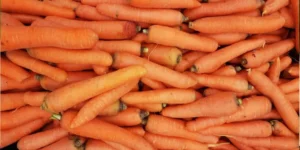The Cost of Our Clothes

Clothes cost more than the number on the price tag. Some clothes contain toxic ingredients that are harmful to manufacturers, consumers, and the environment. The textile industry produces billions of products annually which are often worn few times then discarded improperly, resulting in massive amounts of resource wasting.
The following is an excerpt from Fibershed by Rebecca Burgess. It has been adapted for the web.
Why do we wear what we wear? We often choose our clothes for comfort, for the way they look on our bodies, for their pleasing colors, for shelter from the weather, for protection from harm, for physical exertion, for entertainment, for time-honored traditions, for cultural expression, for group identity, and for the messages they send to our friends, colleagues, and co-workers.
Clothing is so much more than just “fashion”—it sends important signals about our place in society, both actual and perceived, and is a critical element of our personal narrative—the daily, even hourly, choices we make to communicate our histories, desires, affiliations, and self-image.
But when we think about what to wear, we don’t usually consider the consequences of the manufacturing and disposal of our clothing. We also often overlook the ingredients in our clothes, including the type of fibers used to create a garment. Most of us don’t even know what our clothes are made of, although the many toxic ingredients in them have a significant impact on our well-being.
These ingredients (such as azo dyes and water-repellent chemistry) also have a major impact on the ecological status of the earth’s natural systems of which we are part and parcel. And due to the sheer number of humans purchasing garments at the current rates of consumption, the cumulative impacts made by the ingredients in our clothing quickly add up. Over eighty billion individual garments were sold last year globally, a doubling in only fifteen years, supporting a $1.3 trillion textile industry that employs three hundred million people in nearly every country.

Several industries, including dye factories, are located upstream from this site on the Tullahan River in the Philippines. Photo by Gigie Cruz-Sy / Greenpeace.
What we wear is important, but until very recently there has been little public discussion of the significant environmental, social, and human health costs associated with the production, wearing, and disposal of our garments. The creation of textiles, including cotton farming, consumes nearly twenty-five trillion gallons of water annually, and 20 percent of freshwater pollution around the planet is attributed to the dyeing and treatment of garments. The industry utilizes thousands of synthetic compounds, often in various combinations to soften, process, and dye our clothing, and many of which are linked to a range of human diseases, including chronic illnesses and cancer.
The labor conditions in textile sweatshops and factories in most cases offer income that provides little opportunity for the kind of social mobility many people in developed Western nations have come to expect. In 2015 six thousand garment workers in Cambodia protested for fair wages and improved working conditions. They were joined by workers in India and other countries—all part of the supply chain that produced clothing for H&M, one of the biggest clothing retailers in the world. A 2013 report by the International Labour Office stated that 168 million children worldwide are considered to be child laborers, almost 11 percent of the population as a whole. Though most worked in the agricultural sector, many labored in the textile industry. In India nearly half a million children work in the nation’s extensive cotton fields.
These poor labor conditions are exacerbated by our clothing consumption. According to Elizabeth Cline, author of Overdressed: The Shockingly High Cost of Cheap Fashion, in 1990 half of all garments worn by Americans were made in the United States. Today that figure stands at only 2 percent. According to a Greenpeace analysis published in 2015, the average person today is buying 60 percent more garments than he or she did in 2000 and keeping them for half as long. Global demand for clothing, particularly in Asia and Africa, is projected to double by 2050.
The turnaround time for fashion trends—the rate that we use and throw away clothes—dropped by 50 percent between 1992 and 2002. Some turnaround times today are as short as two weeks, a trend that has been dubbed Fast Fashion. “We buy more clothes than ever before [and] we wear them fewer times,” the Greenpeace authors wrote. “By treating clothes as disposable items, fashion has become a novelty, and the commercialisation and marketing of fashion is leading to overconsumption and materialism—keeping our clothes and cherishing them is not in fashion anymore.”
 Two brands closely identified with Fast Fashion, Zara and H&M, together produce one billion items per year, a large portion of which are thrown away after only a few wearings. Only 15 percent of used clothing in the US is recycled; the rest winds up in landfills, more than 5 percent of all the municipal waste generated annually. By 2019 the total amount of textiles purchased is expected to exceed thirty-five billion pounds. Another study pegs the value of this discarded material at $460 billion per year. The authors of the Greenpeace report estimate that as much as 95 percent of all clothes thrown out could be reworn, reused, or recycled.
Two brands closely identified with Fast Fashion, Zara and H&M, together produce one billion items per year, a large portion of which are thrown away after only a few wearings. Only 15 percent of used clothing in the US is recycled; the rest winds up in landfills, more than 5 percent of all the municipal waste generated annually. By 2019 the total amount of textiles purchased is expected to exceed thirty-five billion pounds. Another study pegs the value of this discarded material at $460 billion per year. The authors of the Greenpeace report estimate that as much as 95 percent of all clothes thrown out could be reworn, reused, or recycled.
The fibers in our clothing also have alarming narratives. Polyester, an oil-based synthetic fiber, is used in 60 percent of our garments today, more than double the amount used in 2000. It consumes nearly 350 million barrels of oil every year and accounts for 282 billion kilograms of carbon dioxide emissions, three times higher than the amount for cotton, which will make it increasingly difficult for the world to meet the two- degree Celsius climate goals set down in the Paris Agreement.
Non-oil-based fibers come with a cost as well. Rayon, which doubled in use between 2005 and 2015, is a cellulosic fiber that requires the harvesting and processing of trees and bamboo. Canopy, a Canadian nonprofit organization, is working to ensure that threatened forests are not part of global rayon supply chains, and significant gains have been made to protect endangered forests. However, the primary issue remains—using tree pulp for clothing is a land- and fossil-fuel-intensive process that puts our precious global forests at risk.
Then there is the conventional processing method whereby tree and bamboo pulp is dissolved in carbon disulfide, exposing workers to poisonous fumes that can cause severe neurological damage. The process of manufacturing rayon is so toxic that it was banned in the United States in 2013 by the EPA. A report in 2006 by the European Commission’s Joint Research Centre designated acrylic, a synthetic fiber, as one of the most toxic fabrics to produce in the world.
In addition, microfibers from our synthetic clothing have been shedding into our  waterways for decades, making their way into our oceans and onto our soils. In research sponsored by clothing and gear company Patagonia, a team of graduate student researchers from the University of California–Santa Barbara’s Bren School of Environmental Science and Management investigated the scope and impact of this issue. “Our research found that microfibers are prevalent in both aquatic and terrestrial habitats, from the bottom of the Indian Ocean to farmland in the United States,” the team wrote on its website. Their experiments found that when synthetic jackets are washed in a machine, approximately 1.7 grams of microfibers are released and travel to the local wastewater treatment plant, where up to 40 percent of them enter into rivers, lakes, and oceans.
waterways for decades, making their way into our oceans and onto our soils. In research sponsored by clothing and gear company Patagonia, a team of graduate student researchers from the University of California–Santa Barbara’s Bren School of Environmental Science and Management investigated the scope and impact of this issue. “Our research found that microfibers are prevalent in both aquatic and terrestrial habitats, from the bottom of the Indian Ocean to farmland in the United States,” the team wrote on its website. Their experiments found that when synthetic jackets are washed in a machine, approximately 1.7 grams of microfibers are released and travel to the local wastewater treatment plant, where up to 40 percent of them enter into rivers, lakes, and oceans.
A separate study, led by researchers from the University of California– Davis, examined the presence of microfiber pollution in ocean fish, discovering that one in three shellfish, one in four finfish, and 67 percent of all species tested from fish markets in California contained microfibers. It is further estimated that Europeans ingest up to eleven thousand pieces of microfiber per year through shellfish consumption. The Bren School research team concluded that retrofitting wastewater treatment plants to capture microfibers was too expensive and should not be considered the strategy of choice to mitigate the pollution. The team also noted that once marine organisms ingest the microfibers, they sometimes end up starving and may also suffer reproductive consequences, partly because microfibers attract other toxins, including DDT and PCBs.
Recommended Reads
Recent Articles
Want to keep growing food during the cold months? Try growing winter carrots in your cold house! These are even sweeter & more flavorful than spring carrots!
Read MoreSearching for the perfect book to give the homesteader in your life? We’ve got your go-to books for anyone interested in organic growing, permaculture, soil health, year-round growing & more! What’s their next great read?
Read MoreWinter is coming… but that doesn’t mean you should put away those tools just yet. Extend the growing season well past the first frost!
Read MoreThe following excerpt is from Grow a New Garden: Plan, design and transform any outdoor space by Becky Searle. It has been adapted for the web. If you’re not a gardener yet, and you have never unashamedly added horse manure to your Christmas list, you might be tempted to skip this chapter. But even if…
Read MoreLiving in a colder climate doesn’t mean you need to give up on more fragile plants. By preparing plants for the winter, you’ll set them up to survive and thrive.
Read More









